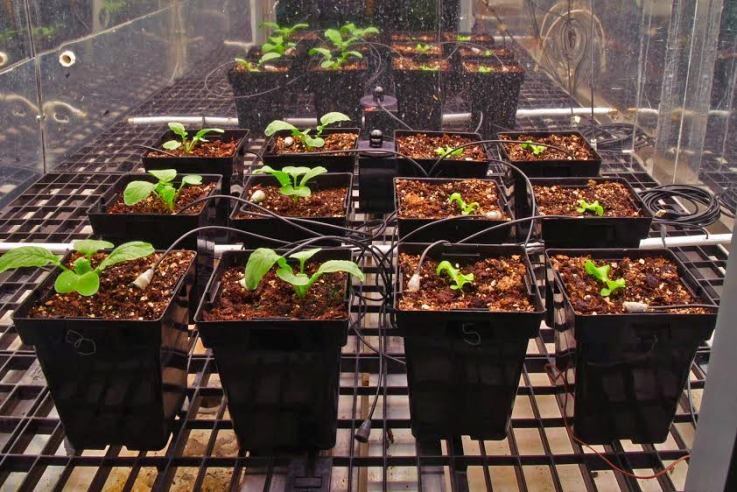The prospect of conquering the dark and vast expanse of space has fascinated the human mind for a good part of the last century. Perhaps that is why ‘The Martian,’ a film adaptation of Andy Weir’s book about one man’s struggle to survive on Mars, rocketed to the No. 1 spot at the box office this weekend.
In the movie, Matt Damon’s character realizes he doesn’t have enough food to survive the next possible human visitation four years in the future and is forced to recognize he might starve to death. Luckily, he’s a botanist and soon figures out a way to grow potatoes using Martian soil and his own feces.
Space farming, though a fictionalized scenario in the movie, is actually happening already, according to Bruce Bugbee. The director of the crop physiology lab at Utah State University has been working alongside NASA for the last decade to grow plants in space.
“What we have focused on is just growing a few salad crops. Growing some lettuce, growing some radishes and they help to recycle the water,” Bugbee told TechCrunch.
Bugbee recently saw his project come to fruition on the International Space Station. The six astronauts on board were not only able to harvest crops this August but also were the first humans in space to consume them, according to a post on NASA.gov.

The book and the movie follow pretty close to the actual science involved in space farming, according to Bugbee – with a few nuanced but important differences. For one, the soil on Mars is far too rich in iron oxides (what gives Mars its reddish color) and would be difficult to grow much. Bugbee’s process forgoes the need for martian dirt and feces in favor of hydroponics and recycled water.
The natural lighting is also an issue. “That’s not nearly enough light. Not even close,” Bugbee said of the movie version. “So what we are working on right now is big, reflective mirrors with lenses that concentrate sunlight and bring it inside with fiber optics.”
What we have focused on is just growing a few salad crops. Growing some lettuce, growing some radishes and they help to recycle the water. Bruce Bugbee, Ph.D. Utah State University
Despite all that, there is a lot of momentum lately around transplanting humans to mars for eventual colonization.
The head of SpaceX and Tesla Elon Musk has proposed sending a greenhouse full of edible plants to Mars to inspire the creation of a lush planet for long-term colonization. And the billionaire founder is quite vocal about his plans to conquer the red planet- even going so far as to say the move ensures humanity’s survival.
NASA is also interested in examining the possibility. The government space agency’s Mission to Mars set for 2020 includes a robotic exploration that could address some key questions about sending humans to settle the red planet. While it’s unclear if part of that exploration includes experimental farming, NASA will be testing ways to extract oxygen from the carbon dioxide on the planet, in preparation for possible human exploration in the future and in preparation for possible farming.
NASA’S Journey to Mars project intends to seed humans to Mars by the 2030’s. “Engineers and scientists around the country are working hard to develop the technologies astronauts will use to one day live and work on Mars, and safely return home from the next giant leap for humanity,” reads a post on NASA.gov.
But the real issue isn’t what’s possible, Bugbee told me over the phone from his Utah lab. The tech necessary to colonize our planetary neighbor is already there. It’s really about money.
NASA has funded Bugbee’s space farming project for what looks to be short-term. We reached out to NASA to see if there were any other plans going forward but so far have not heard back. However, NASA has tested the idea in the wild and proved it works – but funding academic science projects is vastly different from raising startup rounds from VC firms.
Bugbee told me he’s got about $24,000 of runway at the moment. That will keep him going for the next six months. He’ll need a couple hundred thousand dollars more to continue research he told TechCrunch could save space exploration a lot of money in the future.
Today, it costs $10,000 to put a pound of food and other supplies into Earth’s orbit. Growing food in space will make space travel more cost-effective, according to Bugbee. He also told us that scrubbing CO2 from the cabin air is a complex and expensive process for NASA, one that plants do naturally, and for free.
“And then there are the psychological benefits,” he said. Watching plant life grow can boost an astronauts mood on a long, dark ride out into space.






























Comment